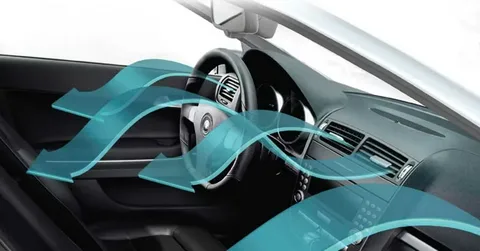The global automotive cabin air quality sensors market is projected to grow from USD 1.19 billion in 2025 to USD 3.94 billion by 2035, reflecting a CAGR of 12.7%. The increasing demand for enhanced cabin air quality in vehicles is driving market growth, particularly as consumers and regulatory bodies place greater emphasis on health, comfort, and environmental standards.
The automotive cabin air quality sensors market is gaining traction as consumers and automakers alike prioritize health, comfort, and safety within vehicle interiors. These sensors, which detect pollutants and regulate air quality, are becoming an essential component of modern vehicles—especially in urban environments where exposure to dust, pollen, smoke, and harmful gases is increasingly common.
Get Ahead with Our Report: Request Your Sample Now!
Rising Focus on In-Cabin Wellness and Safety
As awareness around environmental health continues to grow, automotive manufacturers are integrating advanced air quality sensors to ensure cleaner and safer in-cabin environments. These sensors monitor concentrations of harmful gases such as carbon monoxide (CO), nitrogen oxides (NOx), and volatile organic compounds (VOCs), enabling HVAC systems to automatically adjust airflow and filtration. This not only improves occupant well-being but also reduces potential health risks during prolonged commutes.
Integration with Advanced HVAC and Climate Control Systems
Cabin air quality sensors are playing a crucial role in the evolution of smart climate control systems. By continuously evaluating air purity, these sensors provide real-time data that allows HVAC systems to switch between fresh air intake and recirculation modes, activate ionizers, or enhance filtration efficiency. This synergy between sensors and climate systems leads to optimized cabin environments and personalized comfort for vehicle occupants.
Growing Adoption Across Vehicle Segments
From economy models to high-end luxury vehicles, air quality sensors are being adopted across diverse automotive segments. While initially seen in premium cars, rising consumer expectations have driven their inclusion in mid-range and electric vehicles as well. Automakers are leveraging these technologies to differentiate their offerings and cater to health-conscious buyers.
Exhaustive Market Report: A Complete Study
Urbanization and Environmental Challenges Driving Demand
With increasing urbanization, exposure to airborne pollutants has become a growing concern. Traffic congestion, industrial emissions, and seasonal smog all contribute to poor outdoor air quality, which can infiltrate vehicle cabins. Air quality sensors act as a first line of defense, detecting these contaminants and triggering responsive measures to maintain safe and comfortable interior conditions.
Integration with Connected and Autonomous Vehicle Systems
As vehicles become more connected and autonomous, the role of air quality sensors is expanding. These sensors contribute to the vehicle’s overall environmental awareness, feeding data into onboard systems that manage occupant health and safety. In autonomous vehicles, where occupants may spend more extended periods inside, maintaining a consistently clean cabin environment becomes even more critical.
Technology Advancements and Sensor Miniaturization
Innovations in sensor technology are driving the development of compact, energy-efficient, and highly sensitive air quality sensors. These advancements enable precise monitoring of a wide range of pollutants, including particulate matter (PM2.5 and PM10). Miniaturized sensors are also easier to integrate into modern vehicle interiors without compromising aesthetics or space.
Health and Wellness Features as a Market Differentiator
Automakers are increasingly promoting health and wellness features as a key value proposition. In this context, cabin air quality sensors support a broader ecosystem that includes HEPA filters, antimicrobial surfaces, and ambient purification systems. These enhancements align with post-pandemic consumer preferences for cleaner and healthier mobility solutions.
Regulatory Support and Emissions Awareness
Regulatory frameworks aimed at improving air quality and public health are indirectly influencing the adoption of in-cabin air monitoring systems. While most emissions regulations focus on external pollutants, growing attention to indoor air quality in vehicles is prompting manufacturers to comply with evolving standards and consumer expectations.
Future Outlook
The automotive cabin air quality sensors market is poised for continued growth, driven by environmental challenges, technological innovation, and shifting consumer values. As vehicles evolve into smarter, more health-conscious spaces, air quality sensors will remain a pivotal technology in delivering safe, comfortable, and personalized driving experiences. Suppliers and automakers that embrace this trend will be well-positioned to lead in a competitive and health-aware automotive landscape.
Catapult Your Strategy: Secure Key Insights with Our Report Checkout!
About Future Market Insights (FMI)
Future Market Insights, Inc. (ESOMAR certified, recipient of the Stevie Award, and a member of the Greater New York Chamber of Commerce) offers profound insights into the driving factors that are boosting demand in the market. FMI stands as the leading global provider of market intelligence, advisory services, consulting, and events for the Packaging, Food and Beverage, Consumer Technology, Healthcare, Industrial, and Chemicals markets. With a vast team of 400 analysts worldwide, FMI provides global, regional, and local expertise on diverse domains and industry trends across more than 110 countries.
Contact Us:
Future Market Insights Inc.
Christiana Corporate, 200 Continental Drive,
Suite 401, Newark, Delaware – 19713, USA
T: +1-845-579-5705
For Sales Enquiries: sales@futuremarketinsights.com
Website: https://www.futuremarketinsights.com
LinkedIn| Twitter| Blogs | YouTube






